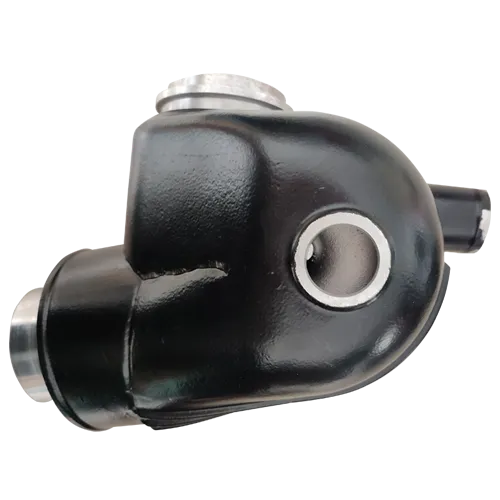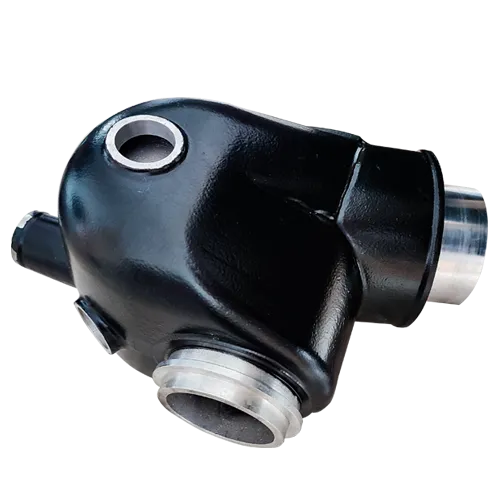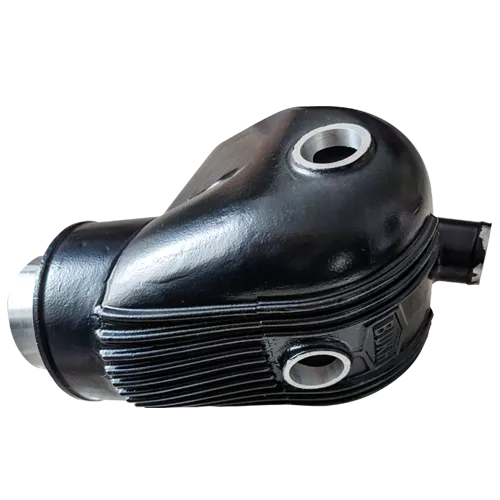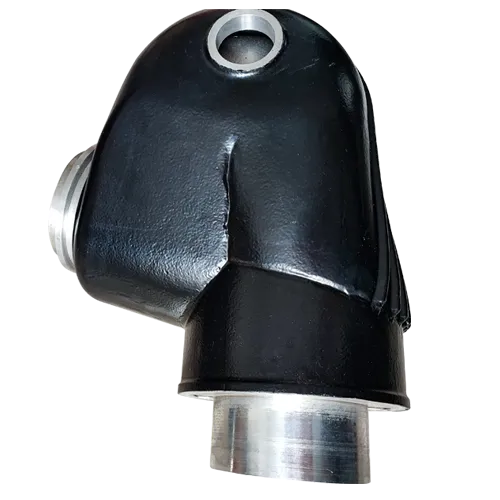Mobile:+86-311-808-126-83
Email:info@ydcastings.com
French
Gearbox Housing for Automotive Performance – Durable & Precision Engineering
Gearbox housing is a critical component in automotive and industrial machinery, serving as a protective enclosure for gears and transmission systems. It ensures mechanical safety, operational efficiency, and longevity of power transmission units. With rapid advancements in engine exhaust pipe technologies, auto electric water pump systems, and sophisticated casting processes, the landscape of gearbox housing manufacturing is experiencing significant evolution. This article presents a deep dive into industry trends, technical specifications, advantages, comparisons, custom solutions, and real-world case studies—driven by data, standards, and professional expertise.

1. Industry Trends: Gearbox Housing and Connected Systems
In 2023, the global market for gearbox housing exceeded USD 5.8 billion, with a compound annual growth rate (CAGR) projected at 4.7% by 2028[1]. Major industry trends include:
- Advanced Materials: Adoption of high-strength aluminum alloys, cast iron with enhanced ductility, and magnesium blends for weight reduction and durability.
- Integration with Modern Systems: Compatibility with electric water pump for car and automotive electric water pump enhances cooling efficiency, especially in EVs and hybrids.
- Precision Manufacturing: Use of precision casting, CNC machining, and heat treatment to achieve stringent ISO 9001, TS16949, and ANSI tolerances.
- Lifecycle & Environment: Higher focus on extended service life (up to 1.2 million km in premium automotive applications) and eco-friendly materials.
2. Technical Specifications: Gearbox Housing Parameter Table
| Parameter | Typical Value / Range | Description |
|---|---|---|
| Material | Aluminum Alloy, Cast Iron, Magnesium Alloy | High tensile strength, low weight, corrosion resistance |
| Process Tolerance | ±0.005 - 0.02 mm | Precision machining to ISO/ANSI standards |
| Wall Thickness | 4 - 12 mm | Optimized balance of rigidity and heat dissipation |
| Surface Treatment | Anodizing, Phosphate, Shot Blasting | Enhanced corrosion & wear resistance |
| Assembly Compatibility | JIS, DIN, ISO Mounting Specs | Supports engine exhaust manifold, water pumps |
| Lifespan | >15 years / 1 million+ cycles | Validated through fatigue & salt spray testing per ISO 9227 |
| Application | Automotive, Industrial, Marine, Energy | Including coupling with auto electric water pump |

3. Engine Exhaust Manifold: Technological Parameters & Advantages
- Product: Engine Exhaust Manifold
- Manufacturer: YD Castings
- Product URL: Visit Product Page
Key Technical Indicators
| Property | Engine Exhaust Manifold | Industry Benchmark |
|---|---|---|
| Material | High-Si-Mo Ductile Iron | Cast Iron / Welded Steel |
| Wall Thickness | 2.5–4.0 mm | 2.8–5.0 mm |
| Heat Endurance | >900°C | 800–950°C |
| Fatigue Life | 1,000,000 cycles | 0.5–1 mn cycles |
| Surface Roughness | <Ra 3.2μm | Ra 5μm |
| Emission Standard | Euro VI / EPA | Euro V / VI |
Advantages and Applications
- Thermal Durability: Specialized alloys prevent warp and crack under engine peaks.
- Emission Compliance: Optimized flow channels boost catalytic conversion efficiency.
- Integration: Designed to match gearbox housing and support next-gen electric water pump for car installation, improving engine temperature regulation.
- Longevity & Reliability: Over 1 million cycle test (per ISO 15550, SAE J2723).
4. Gearbox Housing Manufacturing Process: Step-by-Step & Visualization


Detailed Manufacturing Steps
- Material Preparation: Sourcing and quality check of alloys (Al, Mg, or Cast Iron) per ISO 9001 sampling plans.
- Casting/Forging: Use of sand/metal molds, applying precision control for wall thickness, often gravity die casting or lost foam, ensuring dense, uniform microstructure.
- Rough Machining: Removal of excess, flash, and basic shape establishment.
- CNC Machining: High-precision multi-axis CNC for all functional faces, holes, and mounting points per ANSI B89.3.1 tolerances.
- Inspection/Testing: Non-destructive (ultrasonic, radiography), CMM for geometry, surface, and structural validation. Salt spray (ASTM B117), fatigue, and leak tests performed for QA.
5. Product Comparison: Gearbox Housing vs. Competitors
| Attribute | YD Castings (Our Product) | Global Competitor A | Competitor B |
|---|---|---|---|
| Material | Aluminum 6061-T6 / Ductile Iron | Standard Cast Iron | Aluminum Alloy |
| Precision | ±0.005mm (CNC) | ±0.012mm | ±0.01mm |
| Surface Finish | Ra 4-6μm | Ra 3.5μm | |
| Lifespan | 1.2 million cycles | 0.8 million cycles | 1.0 million cycles |
| Certification | ISO 9001, TS 16949 | ISO 9001 | ISO 9001 |
| Compatibility (automobile water pump) | Yes | Limited | Yes |
| MOQ | 10 pcs | 100 pcs | 50 pcs |
6. Custom Solutions & Application Scenarios
Custom Gearbox Housing Applications
- Integration for engine exhaust pipe platforms in Euro VI-compliant trucks.
- Special sealing channels for auto electric water pump in pure battery EV and hybrid automotive architecture.
- Corrosion-resistant design for marine propulsion gearbox units.
- Ruggedized models with enhanced ribbing for heavy industry (mining, metallurgy, petrochem).
Industry-Specific Examples
- Solution: Custom lightweight gearbox housing with integrated mounting for electric water pump for car
- Result: 18% weight reduction; 0.7°C average decrease in drive unit temperature; Extended component warranty (8 years).
- Solution: High Si-Mo-ductile cast gearbox housing; extra surface anti-corrosive coating (ISO 12944)
- Result: 32% less maintenance downtime over 3 years compared to previous carbon steel models.
7. Quality Assurance & Certifications
- Certified by: ISO 9001, IATF 16949 (automotive), ISO 14001 (environment), ISO 45001 (HSE), with key components tested to ANSI, JIS, and DIN mounting specs.
- Collaborations: Tier-1 automotive OEMs, leading energy equipment integrators (Shell, Siemens Energy, CAT)
- Service Tenure: Over 33 years in gearbox housing casting & machining; 20,000+ units/year annual output.
- Traceability: Each housing is laser-marked for full process traceability per ISO/TS 16949.
- Testing: 100% non-destructive and fatigue tested, blogged in technical journals (see references).
8. FAQ: Gearbox Housing & Related Products
Most advanced gearbox housings are cast from Aluminum 6061-T6 for light weight and thermal dissipation, or high-silicon-molybdenum ductile iron for extreme fatigue and thermal resistance. Both meet ISO 9001, TS 16949 requirements.
Q2: What are typical machining tolerances?
Precision CNC finish achieves ±0.005mm for critical bore and mounting faces; general tolerances per ANSI B89.3.1 are followed.
Q3: What testing standards are applied?
Non-destructive (X-ray, UT), CMM geometry, salt spray (ISO 9227), fatigue cycling (ISO 15550), plus hydraulic pressure testing are standard.
Q4: How does it integrate with engine exhaust pipe or automobile water pump?
Precision interface surfaces, gasket channels, and dedicated mounting bosses are provided. Our designs are engineered to ISO, DIN, and JIS flange standards.
Q5: What is the typical lifespan?
Validated at over 1 million operational cycles or about 15 years of heavy-duty service, with extended warranty for custom applications.
Q6: How soon can custom or replacement gearbox housings be delivered?
Standard lead time: 4-7 weeks (prototype); Mass production: 4-8 weeks depending on complexity and finishing.
Q7: What support is offered post-delivery?
Complete installation manual, engineering hotline (24/7), and on-site support upon request; replacement parts supplied for 8 years minimum.
9. Delivery, Warranty and Support
- Delivery Cycle: 7–28 business days (custom bulk orders may require additional engineering review).
- Warranty: All gearbox housing units are covered by a 2-year limited warranty against manufacturing defects; extended warranties for automotive/industrial clients.
- Support: In-depth technical consultation (design, application matching), rapid response on claims, and globally available spare parts supply chain.
10. Conclusion and References
Modern gearbox housing technology offers substantial advantages in strength, weight, and integration with complementary components such as the engine exhaust manifold, automotive electric water pump, and more. Choosing a reliable, certified supplier ensures product longevity and operational efficiency, validated by real-world industry data.
For further reading and deep dives into casting, application engineering, and market analysis, see below.











